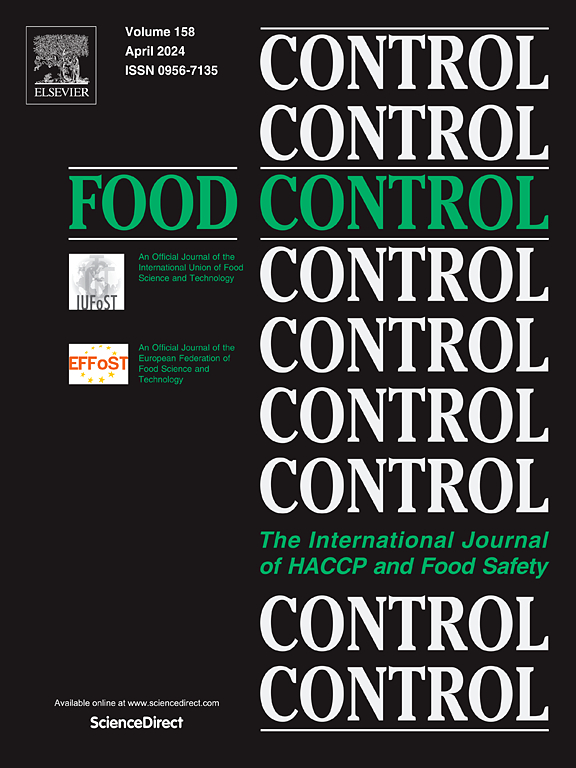Effect of processing conditions and exposure assessment of 5-Hydroxymethylfurfural in caramel colors
IF 5.6
1区 农林科学
Q1 FOOD SCIENCE & TECHNOLOGY
引用次数: 0
Abstract
Caramel colors are an important class of colors used in the food production industry, especially within beverages, in the baking industry and confectionery industry. During the production of caramel colors unwanted contaminants can be formed including 5-(Hydroxymethyl)furfural (5-HMF), 2-acetyl-4(5)-tetrahydroxybutylimidazole (THI), and the isomers 4-methylimidazole (4-MI) and 2-methylimidazole (2-MI), however limited information exists on the relationship between the production parameters and these contaminants directly using industrial production recipes and parameters in a reactor scale production. Here, we present an optimized UPLC-MS/MS methods for determination of 5-HMF, 4-MI, THI, and 2-MI in caramel colors (E150a, c, and d) and we use the methods for the determination of these compounds in samples taken throughout the production of the caramel colors. The results revealed that a high color intensity correlates with a low contamination content of 5-HMF in the caramel color E150a and an exponential decrease in the caramel color E150d. Therefore, the color intensity can be used as an indicator for the contamination level in caramel color. Using the 5-HMF results for an exposure evaluation suggests for the caramel colors with high concentrations that there could be a risk for the consumer, however, could be reduced if optimized manufacturing process would be implemented in the industry. The main food categories contributing to 5-HMF exposure are non-alcoholic beverages, alcoholic beverages, confectionary products, savory sauces and baked products that typically contain caramel color. These insights can inform production practices and regulatory approaches to enhance the safety and quality of caramel colors.
求助全文
约1分钟内获得全文
求助全文
来源期刊

Food Control
工程技术-食品科技
CiteScore
12.20
自引率
6.70%
发文量
758
审稿时长
33 days
期刊介绍:
Food Control is an international journal that provides essential information for those involved in food safety and process control.
Food Control covers the below areas that relate to food process control or to food safety of human foods:
• Microbial food safety and antimicrobial systems
• Mycotoxins
• Hazard analysis, HACCP and food safety objectives
• Risk assessment, including microbial and chemical hazards
• Quality assurance
• Good manufacturing practices
• Food process systems design and control
• Food Packaging technology and materials in contact with foods
• Rapid methods of analysis and detection, including sensor technology
• Codes of practice, legislation and international harmonization
• Consumer issues
• Education, training and research needs.
The scope of Food Control is comprehensive and includes original research papers, authoritative reviews, short communications, comment articles that report on new developments in food control, and position papers.
 求助内容:
求助内容: 应助结果提醒方式:
应助结果提醒方式:


